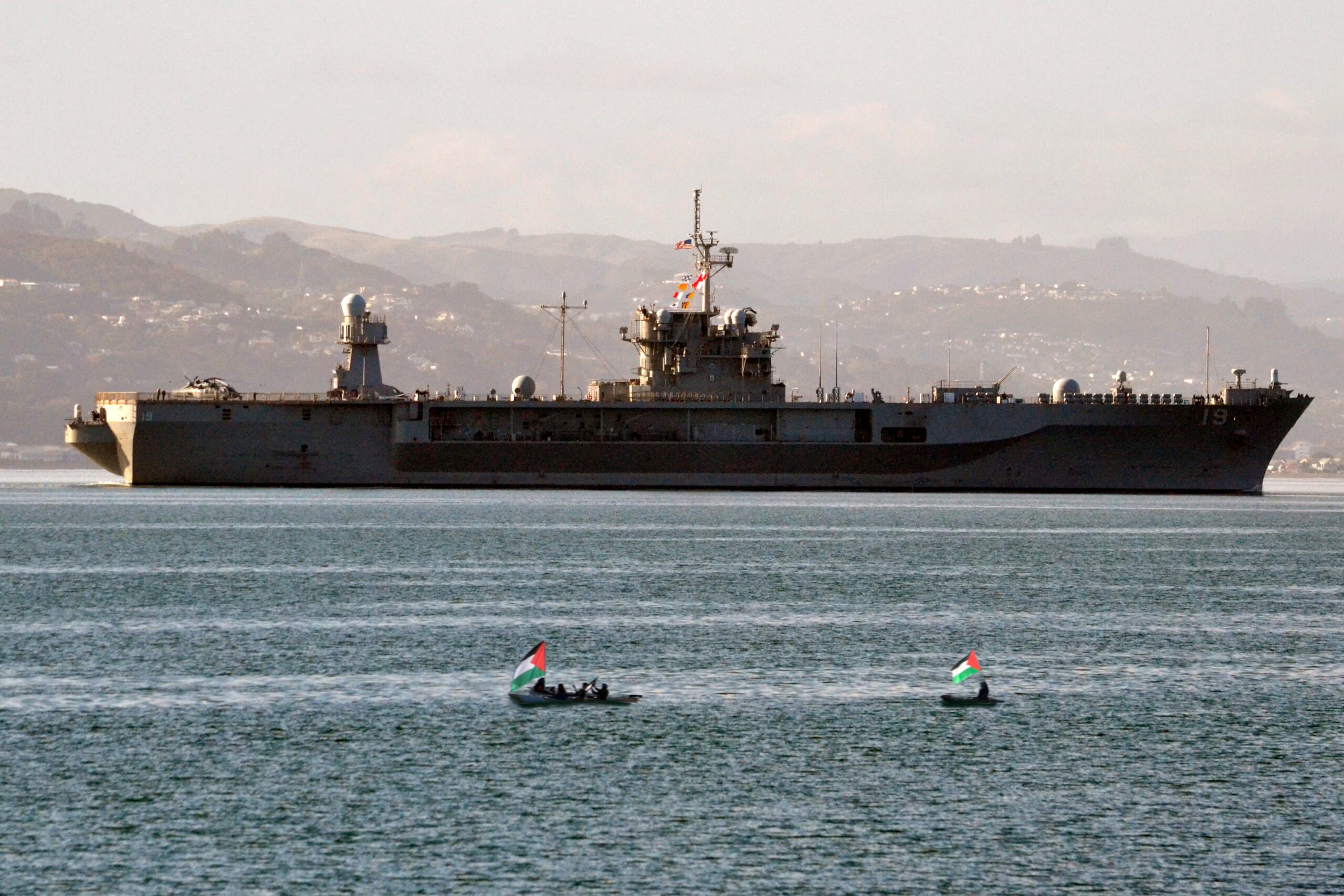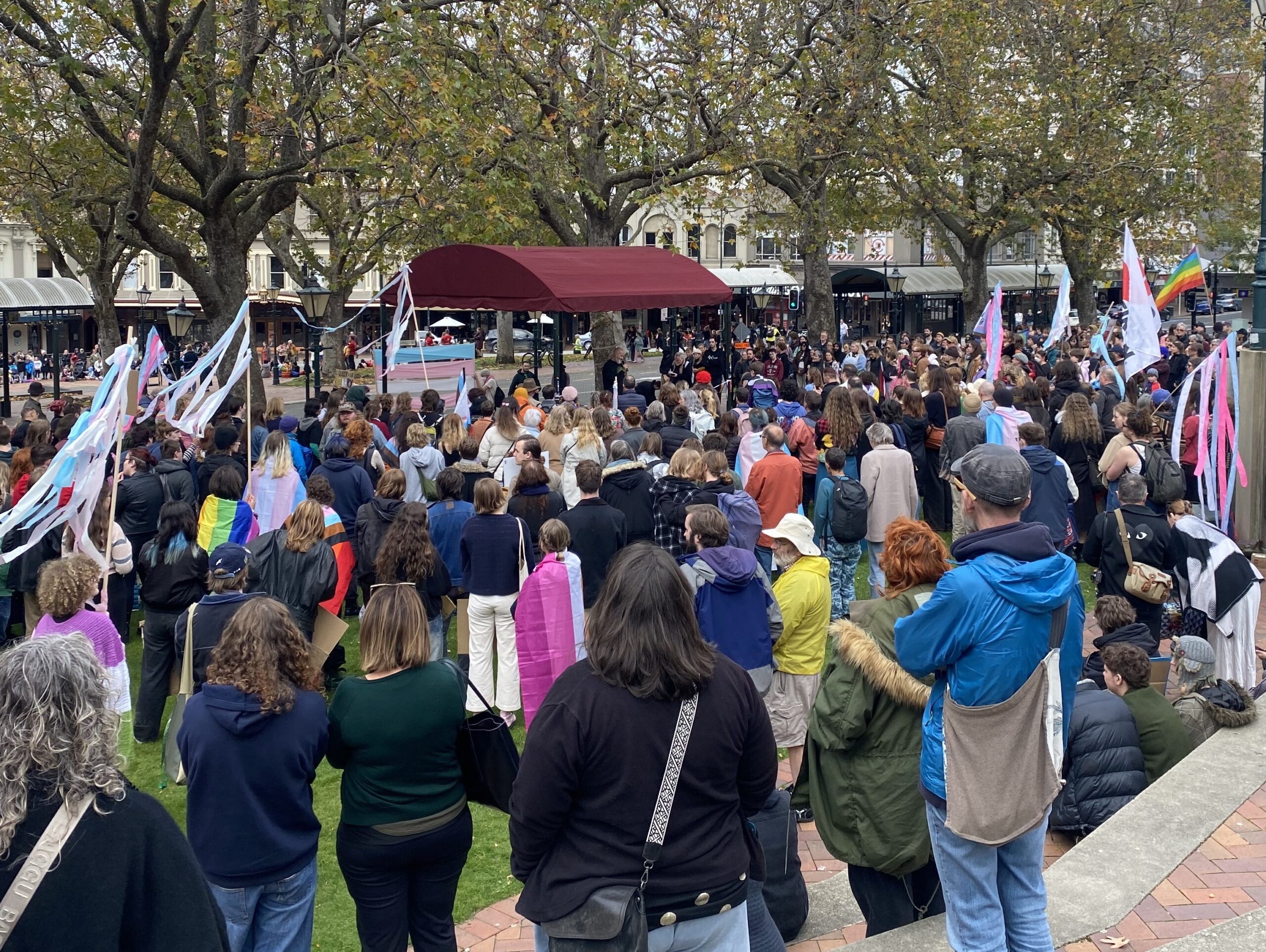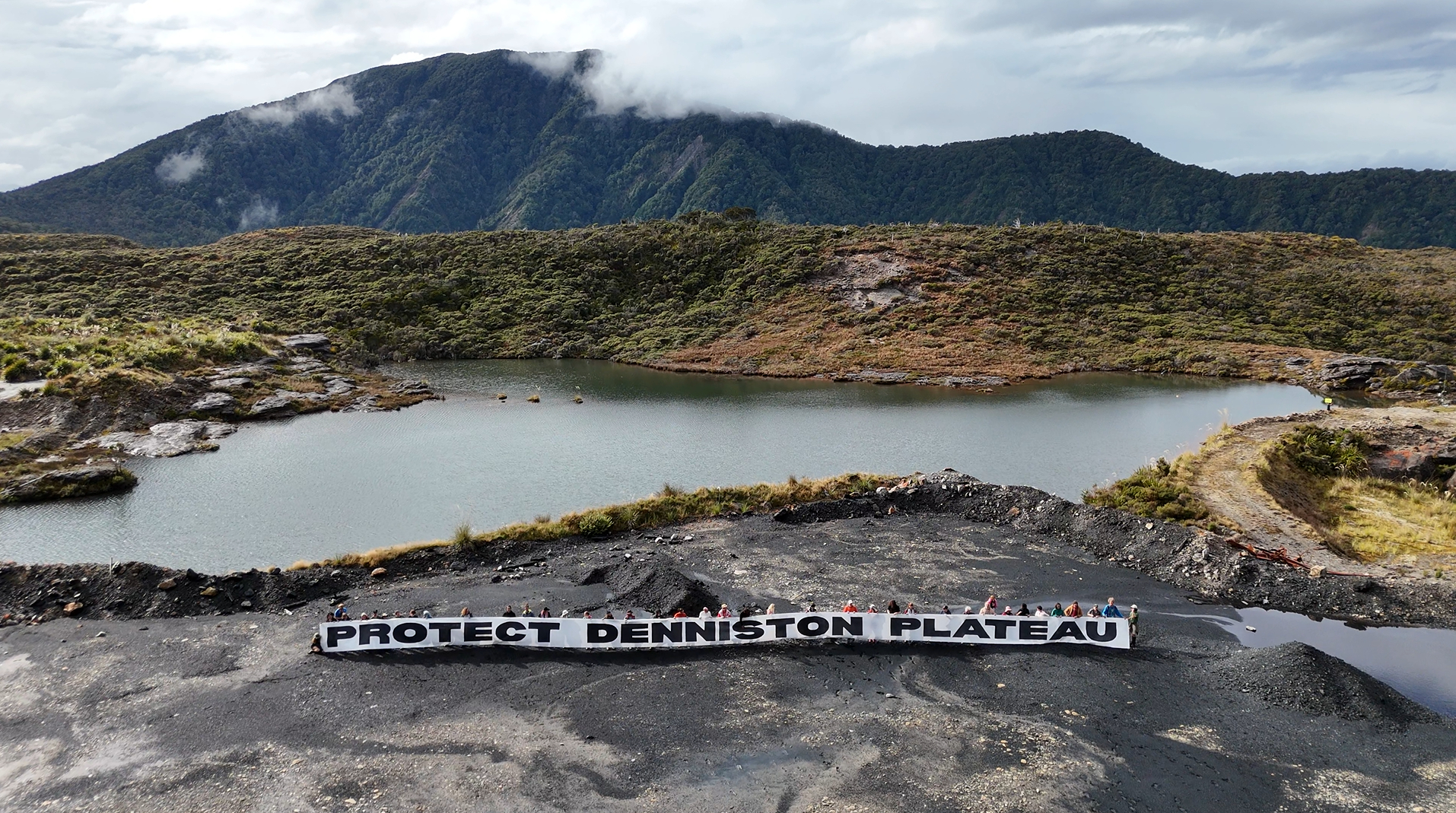The fight for land rights in Aotearoa is the essential question for radical social change for both mana whenua and tau iwi. To resolve this question requires challenging some of the most fundamental aspects of capitalism in New Zealand – the rule of private property. Property held purely for profit, for factories, for land farming and for speculation. This struggle is crystallised in battle over Ihumātao.
Ihumātao is considered to be the oldest settlement in Auckland, and holds cultural and historical significance as an archaeologically rich landscape. It holds evidence of early Māori agricultural activities and is one of the last remaining sites of stone field crop propagation, for which it has been recognised as an at risk site on the United Nations International Council on Monuments and Sites. The whenua tells us stories of the origins of Tāmaki Makaurau. It is the only place in Auckland where pre-colonial stone structures can be found, all other stone garden complexes in Auckland have been destroyed, and it contains the oldest example of pre-colonial architecture in the remains of the Whare. Ihumātao is Waahi Tapu, a sacred place to Tangata Whenua.
Ihumātao was stolen from Māori in 1863 during the Waikato Invasion, along with 1.2 million hectares across the North Island. The Waikato invasion was a premeditated war of conquest directed against the Kingitanga. Their land expropriated and military conquest birthed what we now call Hamilton. The Crown did this under the New Zealand Settlements Act, a parliamentary act that confiscated land owned by anyone deemed to be rebels. In the government’s eyes anyone who associated with the Kingitanga movement were rebels. The Mana whenua of Ihumātao went from feeding and protecting the fledgling town of Auckland, to being accused by the Crown of plotting to massacre those very same pākehā. A desperate lie by the Crown to fuel greed of land speculators, who expropriated all of South Auckland, forcing the Māori to become refugees in their own land.
The land remained in private hands for over 130 years until in 1999, as historian Vincent O’Malley writes, “Manukau City Council, Auckland Regional Council, the Department of Conservation and the Lottery Grants Board jointly purchased a 100-hectare site from several owners and two years later officially opened the Ōtuataua Stonefields Historic Reserve”.
The treaty settlement with one of the iwi, Te Kawerau a Maki, was completed in 2014. The land however was not returned. Originally, the Manukau City Council tried to make the land an open public space, but after the merger into the Supercity, legal action forced the council to rezone the land. As a result Ihumātao was designated a Special Housing Area (SHA), and was sold from the Wallace family in 2016 to Fletcher Residential. It was at this point that SOUL was formed. Since that point SOUL has occupied the land and laid challenge after challenge in every possible legal avenue, through the environment court, the Land court, the Waitangi tribunal, and even the UN.
Ihumātao went from being one of the most prosperous Māori papakainga in the area, feeding the settlers of the township of Auckland, to being acquired formally by the Crown in 1867 and sold to private owners two years later. This story of dispossession and resistance is one repeated throughout Auckland and it is worthwhile to look at those struggles too, because every nook and cranny of Aotearoa has a similar story to tell.
Lessons from Takaparawhā
The comparison has often been made with Ihumātao and Takaparawhā, the 506-day occupation of Bastion Point in 1977. Both sparked a social movement around the fundamental demand of return of land – Tino Rangatiratanga.
Ōrākei, where Bastion Point is located, was alienated over many years from Ngati Whatua, who used to own all of Tāmaki Makaurau. After selling some land to Governor Hobson to found the Auckland settlement Te Kawau the leader of Ngati Whatua resettled his people at Orakei on 280 hectares and sought to preserve it. In 1873 the Native land Court issued a certificate of title with a rider that stated “the land shall be absolutely inalienable.” In 1882 that rider was struck down and the block of land was divided up via the passing of parliamentary acts, the court declared that Ngati Whatua now had 15.6 hectares of inalienable land at Okahu Bay. By 1929 all that was left was 1.2 hectares, and yet even that was not safe, as it was subsequently taken under the Public Works Act for state housing. In 1951 the people were evicted from the land and moved into 30 state houses. The meeting house and the surrounding houses were burnt to the ground as Ngati Whatua watched on.
In 1977 the national Government announced a new development to subdivide the 24 hectares of Crown land at Bastion Point. In January of that year the Orakei Māori Action Group occupied the land at Bastion Point to stop the subdivision going ahead. The local populace were against the subdivision and provided power, food and water to the 150 protestors camped out there. The trade unions strengthened the occupation with a green ban on Bastion point. Members of Nga Tamatoa, Socialist Action League and The Socialist Unity party all joined their support. It’s an important side note to recognise that here too certain Kaumatua chastised the protestors and told them to go home, that it wasn’t their battle. After 506 days the Point was cleared by 600 policemen. Television news clips showed a bulldozer demolishing the makeshift meeting house of the protestors. In the end Ngati Whatua got just 9.2 hectares returned to them. Bastion Point marked a change in the public opinion around Māori land, and the popular movements that struggled for it. It marks one of the few times in history where Māori have had some, even miniscule amounts of their land returned to them. With other notable instances include Eva Rickard and the Raglan Golf Course and Te Runanga Pakaitore and the Moutoa Gardens in Whanganui.
At Ihumātao these same acts of resistance have played out, and so too has the Crown’s response to them. It is a movement lead by wahine toa, who without compromise have steadfastly demanded their whenua back. But it is important to recognise why Ihumātao isn’t just about mana motuhake and tino rangatiratanga, but about the very real scars of capitalist crimes and of course the deep existential crisis of environmental degradation.
The Otautahi stonefields is next to the Mangere wastewater treatment plants; when they were built in 1960 they blocked off the Mangere lagoon and Oruarangi creek from the sea. Historically the creek was once a river large enough for boats to go up to the village. Run off from the plants killed and poisoned the Kai Moana until pressure from iwi and environmentalists pushed to rejuvenate the Manukau harbour. Finally the environmental degradation was being addressed – but by no means fixed. It is only in the last ten years that the bacteria levels have declined enough that it is safe to swim.
Orurangi stream has struggled to recover, in 2013 a Freighting company spilled 1000L of purple dye into the creek, poisoning the river. With increasing expansion of the airport and further pressure from the adjacent industrial zone, let alone from housing, the environmental damage to the area has been immense. SOUL has formed to protect the whenua, and it is clear from the long history of devastation visited on Ihumātao that the whenua is not safe in the hands of private property.
The impending climate apocalypse shows that private property has become irrelevant. We can no longer allow capitalism to ravage the land if we still expect to live in it. Indigenous struggle and particularly here in Aotearoa, the battle for Tino Rangatiratanga, hinges upon the return of the land – so too does our battle for a survivable world.
Ihumātao is a watershed moment. It represents challenging settlement as an end of Māori grievance; it represents the fight for whenua and ecological sustainability; and it represents the fight for communal rights – that those who live in the land should be the ones to look after it and decide what is done to it. It represents an essential challenge to the state, one that must be supported to look towards a future where we can effectively fight against ecological catastrophe and rampant capitalism. Mana Whenua and the Kingitanga have agreed that the land should be returned but we should not wait just for the government’s response. All of us should actively support the protectors.









